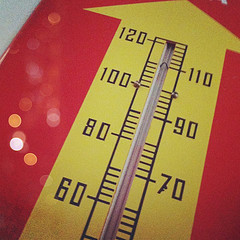On April 11, 2014, Mississippi Governor Phil Bryant signed into law Senate Bill 2622, enacting a construction lien law to protect contractors, subcontractors, materialmen, registered architects and professional engineers, and registered land surveyors. Compliance with the new law is imperative to avoid forfeiture of your right to a lien claim and to maintaining an enforceable lien.
For example, the new law contemplates that a lien claim may be forfeited as follows:
“Upon the written request of the property owner by registered or certified mail or statutory overnight delivery, the contractor shall furnish to the owner a complete list of all subcontractors and materialmen and upon written request from the contractor, all subcontractors shall provide the same information. If the contractor or subcontractor willfully fails or refuses to furnish the list or to give the information to the owner or contractor within a reasonable time, he shall thereby forfeit his right to a lien under this article. Similarly, if the contractor or subcontractor fails to pay any materialman or subcontractor in direct privity with him in accordance with any contract, subcontract or purchase order specifically requiring him to do so, he shall thereby forfeit his right to a lien under this article.”
In addition, no lien claim will be permitted in favor of any contractor or subcontractor who is not licensed, as required by law, or who contracts with any contractor or subcontractor who is not licensed, as required by law. And to be filed and recorded, the lien claim must have the required language.
The new law also provides a form Interim Waiver and Release Upon Payment, Waiver and Release Upon Final Payment, Affidavit of Nonpayment, Notice of Contest of Lien, and Pre-lien Notice to Owner. In addition, the lien claim must be “in substance” as follows:
“A.B., a mechanic, contractor, subcontractor, materialman, machinist, manufacturer, registered architect, registered forester, registered land surveyor, registered professional engineer, or other person (as the case may be) claims a lien in the amount of (specify the amount claimed) on the building, structure, house, factory, mill, machinery, or railroad (as the case may be) and the premises or real estate on which it is erected or built, of C.D. (describing the houses, premises, real estate, or railroad), for satisfaction of a claim which became due on (specify the date the claim was due, which is the same as the last date the labor, services or materials were supplied to the premises) for work performed or labor, services provided (or whatever the claim may be).
THIS CLAIM OF LIEN EXPIRES AND IS VOID ONE HUNDRED EIGHTY (180) DAYS FROM THE DATE OF FILING OF THE CLAIM OF LIEN IF A PAYMENT ACTION IS NOT FILED BY THE CLAIMANT WITHIN THAT TIME PERIOD.
NOTICE TO OWNER OF PROPERTY: You have the right to contest this claim of lien pursuant to Mississippi law.”
Important deadlines include, for example:
- 10 Days — As to single-family residential construction only and a subcontractor, materialman or design professional not in privity with the owner, providing the owner a pre-lien written notice at least 10 days before filing a lien claim of lien, which can be evidenced by any reliable means of delivery
- 30 Days — For any person having a right to a lien claim who does not have privity of contract with the contractor, or, if there is no contractor, with the owner, and is providing labor, services or materials for the improvement of property, within 30 days following the first delivery of labor, services or materials to the property, the person shall give a written notice to the contractor, or, if there is no contractor, to the owner, either by e-mail with a confirmed receipt, registered or certified mail, or statutory overnight delivery setting forth the following: (a) The name, address, and telephone number of the person providing labor, services or materials; (b) The name and address of each person at whose instance the labor, services or materials are being furnished; (c) The name of the project and location of the project to which labor, services or materials are provided; and (d) A description of the labor, services or materials being provided and, if known, the contract price or anticipated value of the labor, services or materials to be provided
- 90 Days — Filing for recording the lien claim in the office of the clerk of the chancery court of the county where the property is located within 90 days after the claimant’s last work performed, labor, services or materials provided, the furnishing of architectural services, or the furnishing or performing of surveying or engineering services
- 2 Days Later — Sending, no later than 2 business days after the lien claim is filed of record, a true and accurate copy of the lien claim by registered by registered or certified mail or statutory overnight delivery to the owner of the property or, if the owner’s address cannot be found, the contractor, as the agent of the owner; if the property owner is an entity on file with the Secretary of State’s office, sending a copy of the claim of lien to the entity’s address or the registered agent’s address shall satisfy this requirement.
- 2 Days Later — If the lien claimant is not the contractor, sending a copy of the claim of lien within 2 business days by registered or certified mail or statutory overnight delivery to the contractor or to the contractor’s registered agent
- 90 Days/180 Days — Filing a lien claim payment action within 180 days from the date of filing for recording the lien claim – the owner may shorten the time for filing the lien claim payment action to 90 days by it, its agent, its contractor or its contractor recording in the chancery clerk’s office a notice of contest of lien, as required by law, along with proof of delivery to the lien claimant
- Same Time as Lien Claim Payment Action — Filing a lis pendens notice with the commencement of a lien claim payment action
The new law is worth a careful read now.





 by “taking” whooping cranes, a protected species under the ESA, by failing to ensure that adequate supplies of freshwater flowed into the river serving the Aransas National Wildlife Refuge, located along the Texas coast. To remedy the situation, the lower court ordered the state officials to refrain from approving or granting new water permits until the State of Texas persuaded the court that such permits will not take whooping cranes in violation of the ESA. The case is
by “taking” whooping cranes, a protected species under the ESA, by failing to ensure that adequate supplies of freshwater flowed into the river serving the Aransas National Wildlife Refuge, located along the Texas coast. To remedy the situation, the lower court ordered the state officials to refrain from approving or granting new water permits until the State of Texas persuaded the court that such permits will not take whooping cranes in violation of the ESA. The case is  Based on the heat index, the App displays a risk level to outdoor workers and access via a “click” to reminders about the protective measures that should be taken at that risk level to protect workers from heat-related illness-reminders. Remember that the industries most affected by heat-related illness include construction; trade, transportation and utilities; agriculture; building, grounds maintenance; landscaping services; and support activities for oil and gas operations.
Based on the heat index, the App displays a risk level to outdoor workers and access via a “click” to reminders about the protective measures that should be taken at that risk level to protect workers from heat-related illness-reminders. Remember that the industries most affected by heat-related illness include construction; trade, transportation and utilities; agriculture; building, grounds maintenance; landscaping services; and support activities for oil and gas operations. Because certain materials are easy to either
Because certain materials are easy to either  The recently formed Greater Sacramento Area Economic Council reportedly “will be modeled after an economic development group in Phoenix that has made several trips to Sacramento to talk to various stakeholder groups.” The new council is expected to attend national and international business recruitment events to sell Sacramento along and to utilize other methods of actively recruiting Sacramento business.
The recently formed Greater Sacramento Area Economic Council reportedly “will be modeled after an economic development group in Phoenix that has made several trips to Sacramento to talk to various stakeholder groups.” The new council is expected to attend national and international business recruitment events to sell Sacramento along and to utilize other methods of actively recruiting Sacramento business.